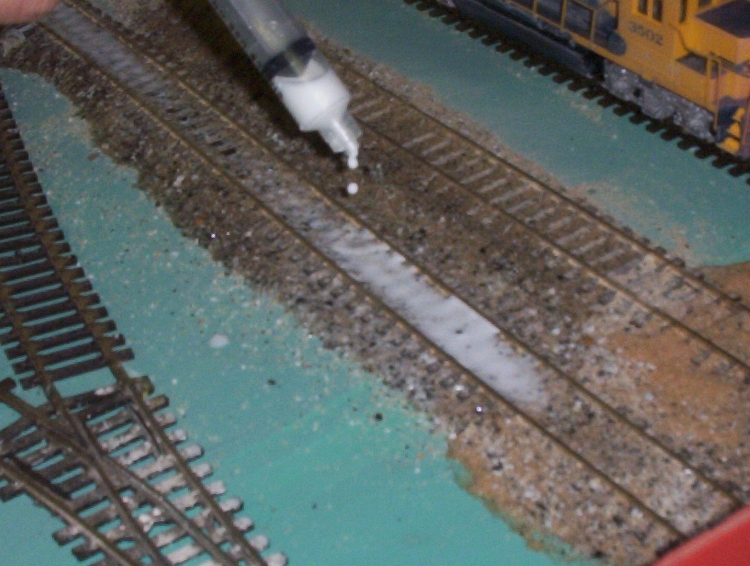Everything on model trains, model railroads, model railways, locomotives, model train layouts, scenery, wiring, DCC and more. Enjoy the world's best hobby... model railroading!
Ballasting Ralph’s Way
Ralph Hammond writes:
“I was prompted to scribble this short piece after I showed a mate of mine how I go about ballasting. I appreciate that many of your readers will already know this stuff, but I’m sure there will be others who don’t. My railroading mate who I thought knew everything said he learned a few tips. Please share it with your contacts if you think it will be helpful to them.”
Ralph’s ballasting methods –

The first point to make is I used a medium-grade ballast on my main line and a finer ballast on the yards and sidings.
I start by spraying the ballast with Isopropyl Alcohol mixed with 30% iso and 70% water. I let it seep deep through the ballast. After waiting a while I apply the glue. Instead of using the more expensive Woodlands Scenic Cement, I use diluted PVA white glue to hold down my ballast. I use a pipette syringe to suck up the glue/alcohol, then squeeze it so it flows out slowly as I move over the track. I apply quite a lot of glue, except around moving points (turnouts) where I’m extra careful.
To make it look real I mixed in some darker ballast to simulate the grease where my locomotives might stand for long periods of time and depict oil and grime dripped from the cars.
Readers might like to add their own suggestions and thoughts in the comments area below.
2 Responses to Ballasting Ralph’s Way
Leave a Reply




















We both use a very tried and true method. Patience in setting in the ballast and allowing good time to have it all cure properly is the trick.
I use an e opted Elmer’s bottle to drizzle the diluted glue. The nozzle allows me to control,the flow. The small bottles are easier to use. You can can bottles at dollar stores too.